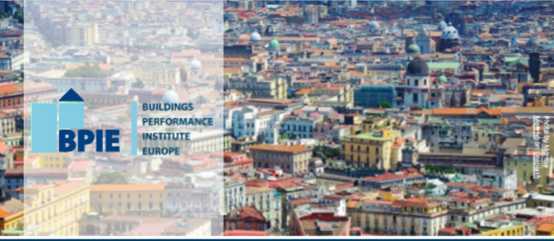4086815967

BUILDINGS SHOULD BE AT THE HEART OF THE EUROPEAN GREEN DEAL. HERE S WHY
Discussion Paper
The European Green Deal must be donefor and with atizens; it must respond to the concems of Europeans to fight cli matę change, decrease sodal ineguolity and secure the affordability ofhousing
The European Green Deal (EGD) offers tKe opportunity to create a carbon-neutral Europę, a fairer socśety and a reinyigorated industrial powerhouse. Europes citizens murt be at it* heart -and nowhere U this morę apparent than in the buildings sector. Buildngs are where we spend mott of our time. and much of our morvey: for those who can afford it, buying a house U Bkety to be the biggest inuestment of a lifetime.
Making our buildingj dimate-proof ił not only about reducing the 36H of COj emitsions they are responsibłe for, but about doing so while ca ring for the people that liwe in them. That'ł why the transformabon of the buildingł sector must hav« a prominent rofe in the EGD- We need to transform our buddings and cities in reiponie to the climate emergency jułt dedared bv the European Parlament and ensure they are resilient to dwnate change impacts - but we also need to ensure that the decarbonisation of the sector benef.ts Eiropean citizens and keeps housing affordable.
Defcvering a zero-carbon buitfngs stock wie require significant changes in the way the construction industry prouides seryicet and Solutions. We also need new mechanisms to trigg« invesłmentt in buMing upgrades. The EGD must make it deV that the buiK enyironment is a priortty infrastructure for Europę Thił would acceterate the shift to a decentrafcsed. highły efficient. interconnected and decarbonised energy system.
The EGO shoiAd therefore include these seven ponópfes:

THE RIGMT TO HEA1TMY AND SUSTAINABU BUIIDINGS fOR AU CITIZENS
S łl
A JUST TRANSITION TO A ZERO-CARBON BUHDING STOCK
The EGD must recognise the right to live, work. play and rest in healthy, highly efficient and renewablet-powered buildings which are frt for purpose. Damp and draughty homes. schools and offices without air puality guarantees and hospitals without active all-season temperaturę management must become a

Transforming our buiiiSng stock must be an indusive process that protects the rights of vulnerab>e citizens Sooial mechanisms and new fmaneing models need to ensure that rer>ovat*on policies don't lead to tenants being priced out of their home due to rent increaset, or homeowners bemg unable to afford the thmg of the past. A commitment to renorste at ieast 3% o European buildng stock per year is necessary to transfonr 97S of a* European buildings that are ciarentfy not At for a -earbon futurę.
necessary improuements. far renorat*on models wił not pnfy ■nerease the sooctal va'ue of our fcńng enyironment but w* JtJO provide new econonuc opporturuocs for regens and induftrm which are gomg through structural transformabon as they ph« out eerbon-intenanre vatue ch*ns
Wyszukiwarka
Podobne podstrony:
European bocloty for Mołecular imaging imaging (ifemiVisit us! Stop by the Biospace Lab booth at the
they had helped to construct, should, all at once, overnight, be demo-lished. The graves of those Ma
considered from a regional point of view. At the same time imports should be placed under stronger e
Buildings lechnologySmart Buildings at the Heart of theCities of Tomorrow Smart tochnotogoc aro atoa
koliber z motylem i (3) V V • •••Symbol List The pair of colors whose names are listed below in r
ss 025 A PHYSIQUE TO BE PROUD OF—SHOWS YOU WHAT TO EXPECT AT THE END OF THE SIX MONTHS COURSE Posiał
skanowanie0035 (12) Criteria levels of performance The reąuired level of performance for success sho
Section DCompletionReturn of permit On completion of work, the issued copies of the permit should be
PROGRAM ROZWOJOWY^1 POLITECHNIKI WARSZAWSKIEJ It should be noticed that the interval of conduction i
(12) Provision should be madę for research into the paediatric use of medicinal products which
mbs 013 MY BRKATIIING SYSTEM of gymnastics are to be competed for, or demonstrated at the Games, rea
PROGRAM ROZWOJOWY^1 POLITECHNIKI WARSZAWSKIEJ It should be noticed that the interval of conduction i
17.7.2000 I EN
więcej podobnych podstron